Kottan – Palm Leaf Basketry of Tamilnadu
Palm leaf basketry is a renowned craft in Tamil Nadu, providing income to rural communities. Intricate designs make these baskets visually appealing, and they are primarily used for local activities. Known as “Kottan” in Tamil Nadu, experienced artisans create new designs based on local preferences and market demands. The craft originated with the Nadar community near Keelayapatti village, who tapped toddy from Palmyra trees. The Nagarathars perfected the craft, utilizing palm leaves for writing, drawing, and crafting utility items like baskets.
The craft is traditionally practiced by women artisans. Pliable and tender Palmyra leaves are used to create decorative Olai baskets. The midrib is removed, and the leaves are cut into strips of the desired size. After the dying process, the strips are moistened to prevent breakage during weaving. The palm leaf strips are woven vertically and horizontally, interlocking with each other. A wooden slab is used for support, and the sidewalls of the baskets are interlaced. The midrib is used as a rim and woven at the mouth of the basket for strength and aesthetic appeal. The baskets are double-layered and reinforced at the rim.
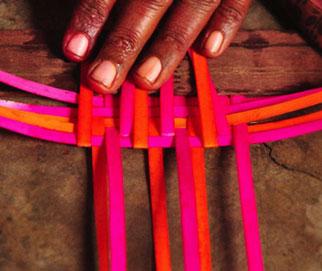
Palm leaf basketry produces a variety of products, including baskets, fruit baskets, mats, pen stands, flower vases, and gift boxes. These items serve both decorative and storage purposes. In the past, Kottan baskets were commonly used during marriages and family functions. The craft is being revived with design, process, and marketing interventions, leading to the creation of modern utility articles.
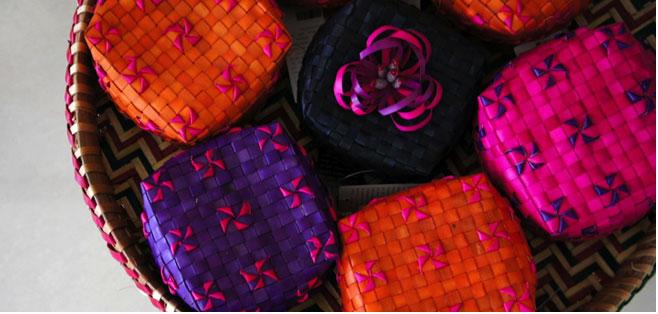
Sabai Grass & Bamboo Weaving of West Bengal
Sabai Grass is extensively grown in the districts of Midnapore, West Bengal, and Mayurbhanj, Orissa. It is used to make various consumer goods such as ropes, mats, carpets, sofa sets, wall hangings, and fashionable articles. Sabai grass ropes are the primary product made by 85% of artisans in the industry. The grass is harvested every three months, with the peak season being November to January. It is then processed by washing, coloring with dyes, and drying in the sun. The colored grass is woven or twisted into ropes and used to create a variety of utility items.
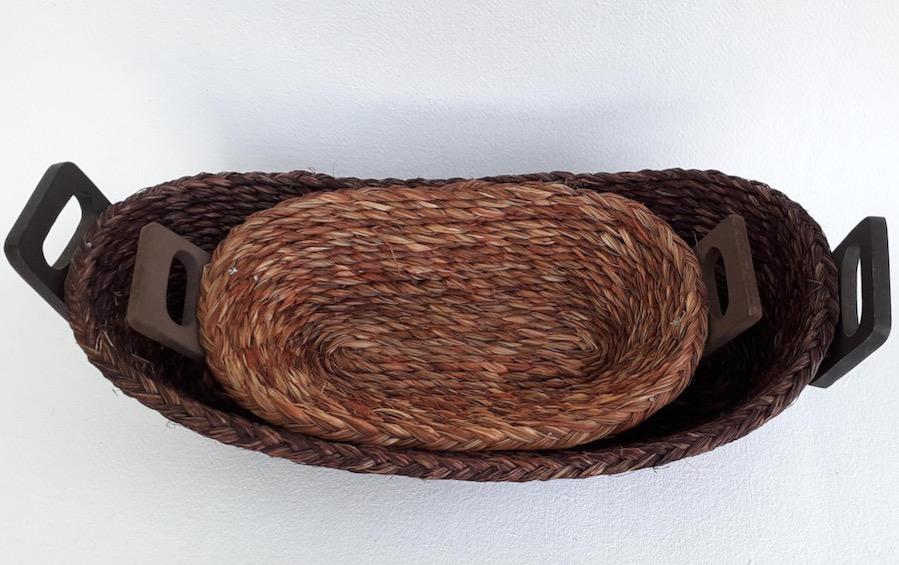
Bamboo is another versatile raw material that plays a significant role in the lifestyle and economy of West Bengal. Women in West Midnapore make bamboo basketry, while men from other tribes create bamboo ply boards and wood accessories in East Midnapore. Bamboo is a fast-growing timber and grass. Craftsmen in Purva Medinipur use essential tools such as a bill-hook, knife, and wooden frame to work with bamboo. The bamboo is split and the soft portion is removed to obtain flat, flexible strips for manufacturing mats. These strips are woven together using a twilled pattern, and the edges of the mat are tied with bamboo slips to keep the woven strips compact.
Sabai grass and bamboo strips are versatile materials that can be transformed into beautiful and interesting products. Rural women in West Bengal weave dried Sabai grass ropes and bamboo strips to create a variety of products, including multipurpose baskets, fruit baskets, mats, serve-ware, and gift boxes. Bamboo is also used to make trays, candlestands, paper clips, bookmarks, and other knick-knacks. The craft of bamboo and Sabai grass is being revived with modern design and process improvements, offering consumers a range of sustainable home décor and utility products.
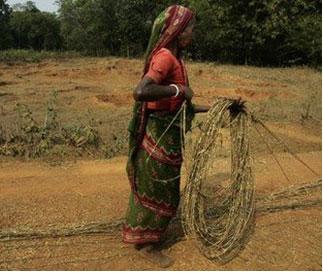
Palm leaf basketry produces a variety of products, including baskets, fruit baskets, mats, pen stands, flower vases, and gift boxes. These items serve both decorative and storage purposes. In the past, Kottan baskets were commonly used during marriages and family functions. The craft is being revived with design, process, and marketing interventions, leading to the creation of modern utility articles.
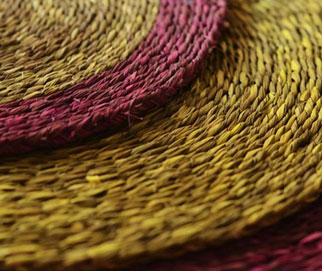
Sikki Grass Weaving of Bihar
The women of Mithila in North Bihar are renowned for their craft skills, including the impressive Sikki Craft. Sikki is a golden-colored grass that grows in the wet and marshy areas around rivers and ponds in the region. The craft is primarily carried out in Madhubani, Darbhanga, and Sitamarhi districts. In the past, women in these villages engaged in craft-making for entertainment and to create valuable utility products for their households. Sikki grass is known for its beautiful golden color, but it can also be dyed in various shades to enhance the final product’s attractiveness.
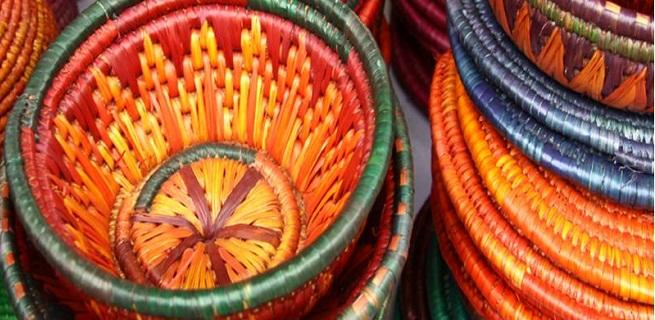
The raw materials for Sikki Craft include Sikki grass, which is collected by Harijans during the rainy season and sold in local markets. Moonj, another type of grass, is used to provide basic shape and strength to the Sikki products. Colors for dyeing the grass are readily available in the local market. The main tools used by Maithili women include a needle-shaped iron object called Takua for weaving, a thin knife for splitting, and scissors for cutting the Sikki grass.
To make the Sikki grass usable, it is cut from its base, dried, and soaked in water to make it pliable. The grass is then coiled around the munj to create the basic shape and strength for the final product. Maithili women exhibit creativity, concentration, and patience as they combine dyed and natural golden-colored Sikki grass to create intricate designs and patterns. Initially, utilitarian products like baskets, containers, and figures of gods and animals were made, but now artisans produce a variety of decorative and utilitarian items based on market demand.
The craftsmen of Sikki Craft are now aiming to establish a presence in both national and international markets by creating a wide range of decorative products. These include traditional containers, boxes, trays, and flower baskets used for household purposes. The craft has evolved to adapt to the demands of the present market, with artisans showcasing their skills and creativity in producing unique and attractive Sikki products.

Moonj Grass Weaving
Moonj grass craft is a traditional and sustainable craft form that originated in regions like Rajasthan and Uttar Pradesh in India. Skilled artisans weave moonj grass, also known as munj or wild date palm, to create a variety of functional and beautiful products such as baskets, mats, bags, and more. This craft showcases the artisans’ expertise in utilizing natural materials to produce intricately woven items that are both durable and aesthetically pleasing. By preserving traditional craftsmanship and promoting the use of natural materials, moonj grass craft promotes sustainable living.
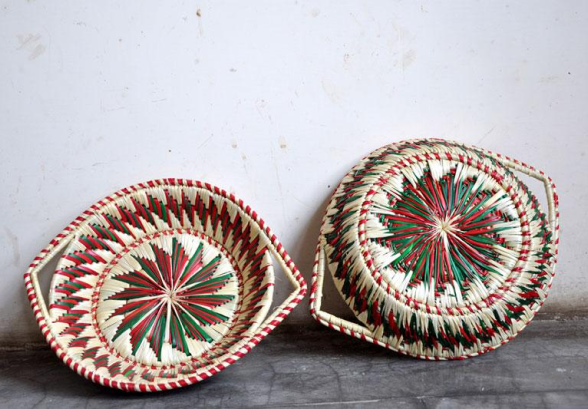
The manufacturing process of moonj grass craft involves simple techniques carried out using natural grass and basic locally made tools. The main raw materials used are moonj grass and kaasa, which are procured in bulk once a year from specific regions. The grass is dried under the sun before being made into small knots called “Balla.”
These knots are soaked in cold water to enhance their flexibility. The kaasa grass is used as stuffing, and the moonj grass is wrapped around it to create coils. These coils are then used to form the base and walls of the basket. The grass is stitched together to make the basket sturdy, and colored grass is used to create motif patterns. The handles of the basket are also made and attached by stitching with the grass.

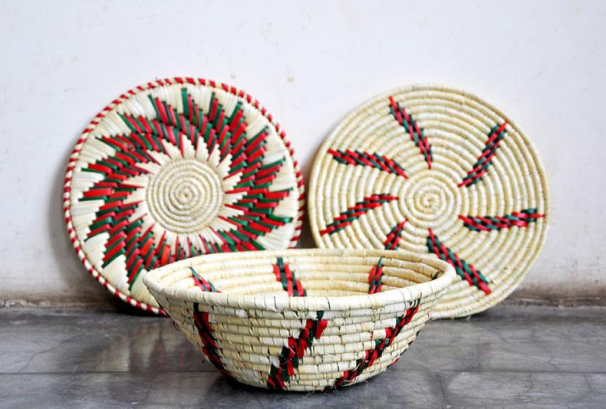
Moonj grass products serve various daily life purposes and can be used as containers, food storage devices, or wall decorations. They are simple, attractive, and eco-friendly. The range of products includes vanity cases, round baskets, containers of different sizes, and even innovative items like bookshelves, earrings, fruit baskets, and hand purses. These products hold traditional significance and are often given as gifts during ritual functions and weddings. Moonj grass craft not only preserves cultural heritage but also offers practical and sustainable solutions for everyday needs.
Kauna Grass Craft
Kauna grass craft is a traditional handicraft form that originates from the Indian state of Assam. It involves the skilled weaving and crafting of products using the versatile and eco-friendly kauna grass. Kauna grass, also known as water reed or water chestnut stalk, is harvested from marshy areas and then carefully processed and dyed. Artisans use their expertise to create a wide range of beautiful and functional items, including baskets, mats, hats, bags, and home decor items. The craft not only showcases the rich cultural heritage of Assam but also promotes sustainable practices and supports the livelihood of local communities. The intricate designs and natural appeal of kauna grass craft make it a unique and sought-after art form.

Kauna grass craft utilizes kauna grass as the primary material, which is harvested from marshy areas. Artisans use cutting tools to harvest and trim the grass, and weaving tools such as needles and hooks to create intricate patterns. Natural colorants or dyes can be added to the grass, and binding materials are used to secure the woven strands. Additional tools for designing and finishing materials like varnishes or oils may be applied to enhance the appearance and durability of the crafts. The combination of these tools and materials allows artisans to create beautiful and functional products using kauna grass.
The process of kauna grass craft begins with harvesting and preparing the grass, followed by sorting and cleaning it to remove impurities. The softened grass is woven using traditional techniques, with tools like needles or hooks used to create intricate patterns. Natural dyes are applied for vibrant colors, and binding materials secure the woven strands together. After drying and setting, the piece is finished with varnishes or coatings for protection. The final product, which can be baskets, mats, hats, or decorative items, is now ready for display or use.
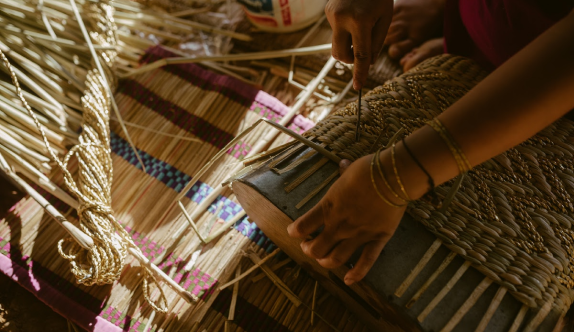
Kauna grass craft results in exquisite and eco-friendly products, such as intricately woven baskets, mats, hats, and decorative items. These handmade creations showcase the natural beauty and versatility of kauna grass.

